-
July 15th, 2016
The Lumière brothers
La Sortie de l’usine Lumière à Lyon [Workers Leaving the Lumière Factory, 3rd version], 1895.
Original version, b/w, 42’Jean Vigo
À propos de Nice [Apropos of Nice], 1930
Original version, b/w, 23’Manoel de Oliveira
Nice: À propos de Jean Vigo [Nice: Apropos of Jean Vigo], 1983
Original version, color, 58’The tension and progressive contamination between leisure and work appeared in the founding images of film: La Sortie de l'usine Lumière constitutes theatrical expression, whereby workers stage a fictitious working day on their day off. Vigo approached this quandary by revealing the social and class implications – using the holiday city of Nice, he traced an ill-tempered critique of the new leisure class: the tourist. Fifty-three years on, and as an homage, de Oliveira returned to Nice to add new realities to this complex binomial.
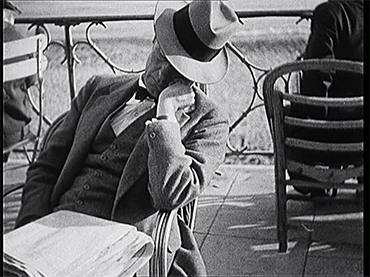
-
July 16th, 2016
Jacques Tati
Les vacances de Monsieur Hulot [Monsieur Hulot’s Holiday], 1953
Original version, b/w, 95’By way of his on-screen alter ego, Monsieur Hulot, Tati conveys the pretence and paradoxes in the new tourist class that emerged after the legal acknowledgement of paid holidays. Tourism is presented as machine-like and automated fun i.e. a job: having fun and showing it verifies that the promise held at the beginning of the holiday is seen through.

-
July 22nd, 2016
Dino Risi
Il sorpasso [The Easy Life], 1962
Original Version, b/w, 105’Shot during the years of “economic miracle” in Italy, Il sorpasso tells the frenetic story of two seemingly incompatible characters on a madcap trip at the height of the summer holiday season. A timid law student and a hedonistic scrounger, reflections of social dilemmas in Italy, aimlessly travel the country in style.
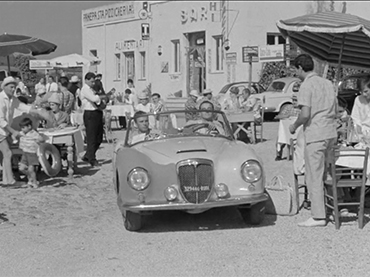
-
July 23rd, 2016
Jean-Luc Godard
Week-end, 1967
Original version, color, 105’Filmed a year before May ‘68, Week-end is a type of premonition with which Godard captured the end of an era. The film provides an acerbic description of the nascent consumer society via one of its most prized objects: the car, a symbol of the status, social class, climbing and influence of a whole economic and political system.

-
July 29th, 2016
Josep María Forn
La piel quemada (Burnt Skin), 1967
Original version, b/w, 110’To whom does burnt skin belong? Who is burnt by the sun? Setting out from these questions, Forn focuses on the location of Lloret de Mar, a town undergoing major transformation with the development of tourism. In this town the needs and desires of immigrants, predominantly from Andalusia, are accommodated as they seek employment; the new tourist class and the locals, all under the same blazing sun.
Acknowledgements: Filmoteca de Catalunya (Catalonia Film Institute).
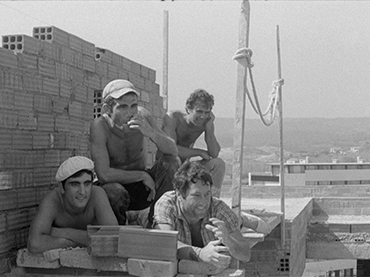
-
July 30th, 2016
Frank Perry
The Swimmer, 1968
Original version, color, 95’Adapted from John Cheever’s short story under the same name, The Swimmer portrays the disillusionment, cynicism and decay of the middle and upper class. One day, at the end of summer, Merrill decides to return home by swimming through all the pools in the neighbourhood, thus creating a fictitious river that will progressively take him further away from his goal and the idea of home, and in the process question something deeper: the American dream.
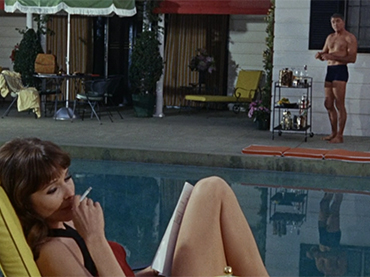
-
August 5th, 2016
Jim Jarmusch
Permanent Vacation, 1980
Original version, color, 76’The title of the New York director’s first film refers to the slangy and sarcastic sense of the term layoffs, or collective dismissals. The “vacation” in the title does not allude to free time but rather the time spent over the course of a day by an urban bohemian, a new kind of forced leisure class that becomes alienated in a de-industrialised urban space and finds it impossible to communicate with one another and with the world they have been thrown out of.
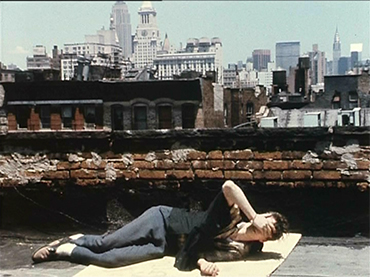
-
August 6th, 2016
Raoul Ruiz
O território [The Territory], 1981
Original version, color, 104’From a ritualistic and perverse perspective, O território addresses the unavoidable relationship that exists between tourism and cannibalism, between civilisation and brutality. It is the extreme side of a self-cannibalising tourism, an allegorical display of the tourist finding it impossible to explore and get to know the limits of the territory they are visiting and which, on occasions, proves too much for them.

-
August 12th, 2016
Dennis O’Rourke
Cannibal Tours, 1988
Original version, color, 67’“There’s nothing so strange, in a strange land, as the stranger who comes to visit it” is the quote that opens this film, which is shot during an excursion to an island inhabited by an ancient tribe of cannibals who are now caught up in producing handicrafts for tourists. This is a key landmark for understanding the complex web on which the tourist industry is built and based, feeding off and nurtured by the desire to discover something original, hidden and paradisiacal.
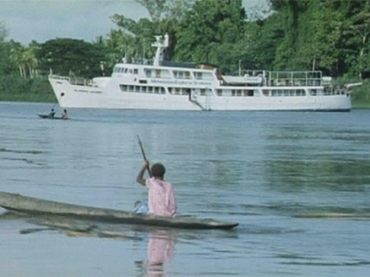
-
August 13th, 2016
José Luis Torres Leiva
Verano [Summer], 2011
Original version, color, 95’An homage to intimate and family holiday films, where distraction gradually becomes a yearning for lost time. The director turns “amateurism” and improvisation into an experimental cinematic reflection; shot in 16 and 35 mm film, the film-maker projects the movie onto a wall and films it again. The recording is the final result: falling between the simplicity of Eric Rohmer and the complexity of experimental cinema.
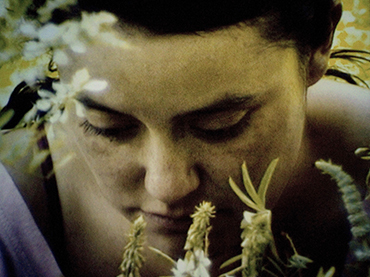
-
August 19th, 2016
Narimane Mari
Loubia Hamra [Bloody Beans], 2013
Original version, color, 77’Presentation by the director of the film together with Elena Oroz
Made in Algeria as the country celebrates fifty years of independence, Loubia Hamra approaches another of the seductive images of summer by definition: the beach. Yet it does so by subverting Western iconography as a symbolic place of rest, exploring it as a space crossed by the trauma of recent history.

-
August 20th, 2016
Ion de Sosa
Sueñan los androides [Androids Dream], 2014
VO, color, 61’Set in the futuristic apex of Spanish developmentalism, in Benidorm in 2052, and shot across three Octobers between 2010 and 2014, in this film the ideas that intersect the series are upheld: the transformation and annihilation of space, the influence of the subject-tourist in the territory, the undercurrent of speculation as a driving force of seasonal cities and the world as a huge stage for global tourists, condemned to live without either work or rest. A grotesque, deformed and ascetic version of a devastated present: post-crisis Spain.

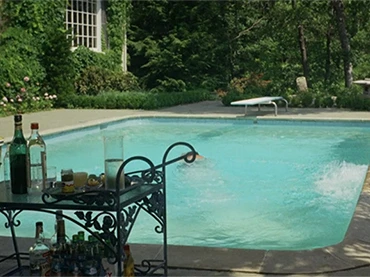
Frank Perry. The Swimmer. Film, 1968
Held on 15, 16, 22, 23, 29, 30 jul, 05, 06, 12, 13, 19, 20 ago 2016
The open-air cinema is closely linked to summer holidays: a space and time where the working class is freed from work obligations and where the chance for enjoyment and leisure presents itself. Setting out from the concurrence between Thorstein Veblen’s book The Theory of the Leisure Class, published in 1899, and the birth of cinema via Workers Leaving The Lumière Factory, the Lumière brothers’ 1895 film, this series, screened on the outdoor terraces of the Museo, offers a journey through the history of the medium, focusing on its relationship with the conception of holidaying, leisure, travel and tourism, through which a whole range of ideas and questions that surface at this intersection are analysed. In other words: the consolidation of a working class freed from work and embodied in the display of social status; the working-class conquest of paid holidays, with the subsequent division between work and unproductive time; or the ensuing appearance of mass tourism at the heart of the social, cultural, economic and even landscape transformations that gave rise to the appearance of the subject-tourist, motivated by the desire to seek different but at the same time identical and uniform experiences. The working-class dream of a permanent vacation, aspiration or condemnation?
Curatorship
Gonzalo de Pedro and Chema González




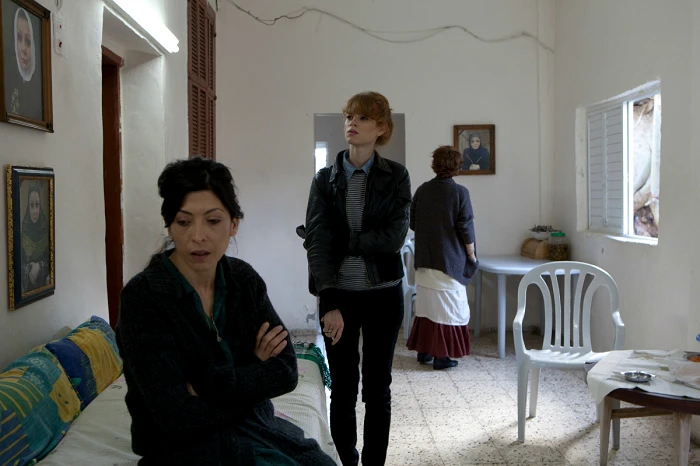

Más actividades
![Metahaven, The Sprawl: Propaganda about Propaganda [La diseminación: propaganda sobre propaganda], 2015, película](https://recursos.museoreinasofia.es/styles/small_landscape/public/Actividades/interfaz_emotiva_0.jpeg.webp)
EMOTIVE INTERFACE. The Films of Metahaven
Thursday, 27, Friday, 28, and Saturday, 29 November 2025 – check times
The Museo Reina Sofía and the Márgenes International Film Festival in Madrid, here in its fifteenth edition, present this series devoted to the artist collective Metahaven. The programme is framed inside the working strand both institutions started in 2024, focusing on an exploration of contemporary audiovisual narratives, a hybridisation of languages and the moving image as a tool for practising critical gazes on the present. Emotive Interface. The Films of Metahaven comprises two sessions of screenings and a masterclass delivered by the collective, centring on the relationship between the internet, technology, time and the moving image. All sessions will be presented by the artists.
The work of Metahaven — Dutch artist duo Vinca Kruk and Daniel Van der Velden — encompasses graphic art, video, installations, writing and design around urgent issues related to governance, identity, power and transparency in the digital age. Thus, their practice stands at the crossroads of art, film and critical thought, as they employ visual language as a tool to explore the tensions between technology, politics and perception, their practice combining the rigour of the visual essay and a strong poetic component, where graphic design, digital animation and documentary material fuse into dense, emotionally ambiguous compositions that speak of post-digital romanticism through an allegorical formulation. The spotlight of this series shines brightly on some of Metahaven’s recent works, for instance The Feeling Sonnets (Transitional Object) (2024), in which they examine language, poetry and digital time, and on The Sprawl (Propaganda About Propaganda) (2015), an essay which explores how the internet and social media have radically altered the relationship between truth, power and perception. Finally, the duo’s masterclass is set forth here as a survey of the main themes explored by both artists.
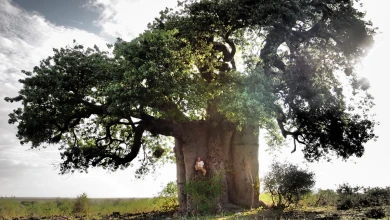
Francisco López and Barbara Ellison
Thursday, 11 December - 8pm
The third session in the series brings together two international reference points in sound art in one evening — two independent performances which converse through their proximity here. Barbara Ellison opens proceedings with a piece centred on the perceptively ambiguous and the ghostly, where voices, sounds and materials become spectral manifestations.
This is followed by Francisco López, an internationally renowned Spanish sound artist, who presents one of his radical immersions in deep listening, with his work an invitation to submerge oneself in sound matter as a transformative experience.
This double session sets forth an encounter between two artists who, from different perspectives, share the same search: to open ears to territories where sound becomes a poetic force and space of resistance.
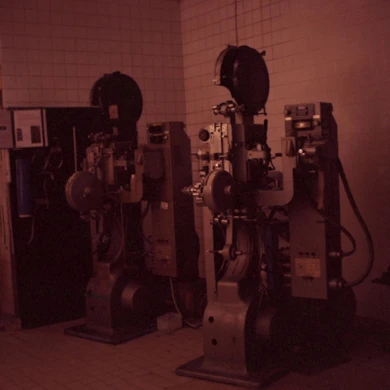
Long Live L’Abo! Celluloid and Activism
4, 5, 6 DIC 2025
L’Abominable is a collective film laboratory founded in La Courneuve (Paris, France) in 1996. It came into being in response to the disappearing infrastructures in artisan film-making and to provide artists and film-makers with a self-managed space from which to produce, develop and screen films in analogue formats such as Super 8, 16mm and 35mm. Anchored in this premise, the community promotes aesthetic and political experimentation in analogue film opposite digital hegemony. Over the years, L’Abominable, better known as L’Abo, has accompanied different generations of film-makers, upholding an international movement of independent film practices.
This third segment is structured in three sessions: a lecture on L’Abo given by Pilar Monsell and Camilo Restrepo; a session of short films in 16mm produced in L’Abo; and the feature-length film Une isle, une nuit, made by the Les Pirates des Lentillères collective.
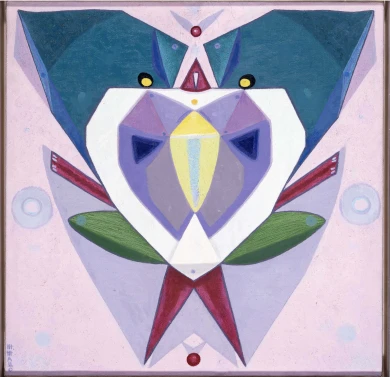
Estrella de Diego Lecture. Holding Your Brain While You Sleep
Wednesday, 3 December 2025 – 7pm
Framed inside the Museo Reina Sofía’s retrospective exhibition devoted to Maruja Mallo, this lecture delivered by Estrella de Diego draws attention to the impact of the artist’s return to Spain after her three-decade exile in Latin America.
Committed to values of progress and renewal in the Second Republic, Mallo was forced into exile to Argentina with the outbreak of the Civil War and would not go back to Spain to settle definitively until 1965 — a return that was, ultimately, a second exile.
Mallo saw out her prolific artistic trajectory with two impactful series: Moradores del vacío (Dwellers of the Void, 1968–1980) and Viajeros del éter (Ether Travelers, 1982), entering her most esoteric period in which she drew inspiration from her “levitational experiences” of crossing the Andes and sailing the Pacific. Her travels, both real and imaginary, became encounters with superhuman dimensions.
In parallel, her public persona gained traction as she became a popular figure and a key representative of the Generation of ‘27 — the other members of which also started returning to Spain.
This lecture is part of the Art and Exile series, which seeks to explore in greater depth one of the defining aspects of Maruja Mallo’s life and work: her experience of exile. An experience which for Mallo was twofold: the time she spent in the Americas and her complex return to Spain.
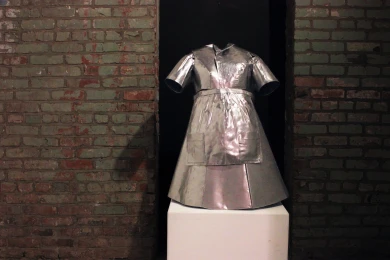
Haunting History
Friday, 28 November 2025 – 6pm
Curator Patricio Majano invites writer Elena Salamanca, artist Beatriz Cortez and artist and writer Olivier Marboeuf to explore, in conversation, the political agency of artistic forms in relation to the spectral resonances in Central America, the Caribbean, and their diasporas.
Central America is a region inhabited by spectres that continually interrupt any attempt at historical closure. Five centuries of colonisation, counterinsurgency wars, genocides, dictatorships and deportations have resulted in accumulated traumas and persistent forms of violence that still move around under the surface of the present. More than past ruins, these spectres are material forces which persist, invade and reclaim the reparation and reconfiguration of the frameworks of historical legibility. In Central American artistic practice, these spectral presences become method, counter-archive and counter-pedagogy.
Taking El Salvador as both axis and prism, this conference seeks to think about “ghostliness”, not as a metaphor but as a political and aesthetic technology, from the following questions: How is that which persists beyond disappearance manifested? Who speaks from amputation? How does memory operate when the State apparatus has systematically searched for its erasure? How is the spectral tapped into as a form of resistance? Which conditions and methods allow art to articulate a claim, reparation and justice when hegemonic narratives are upheld in denial?
Over the course of 2025, these questions have articulated the research residency of Salvadoran curator Patricio Majano in the The Cáder Institute of Central American Art (ICAC) by virtue of the project Amputated Identities: Ghosts in Salvadoran Art. Majano’s research traces genealogies and resonances between Salvadoran contemporary art, the Indigenous genocide of 1932 and the Civil War (1980–1992), interrogating how these unresolved forms of violence operate with artistic subject matter.
Beyond a closing act of the ICAC residency, this encounter stresses exchange and dialogue as method: opening the process and sharing questions, tensions and unresolved challenges — not as conclusions, but as work in progress.



![Miguel Brieva, ilustración de la novela infantil Manuela y los Cakirukos (Reservoir Books, 2022) [izquierda] y Cibeles no conduzcas, 2023 [derecha]. Cortesía del artista](https://recursos.museoreinasofia.es/styles/small_landscape/public/Actividades/ecologias_del_deseo_utopico.jpg.webp)
![Ángel Alonso, Charbon [Carbón], 1964. Museo Reina Sofía](https://recursos.museoreinasofia.es/styles/small_landscape/public/Actividades/perspectivas_ecoambientales.jpg.webp)